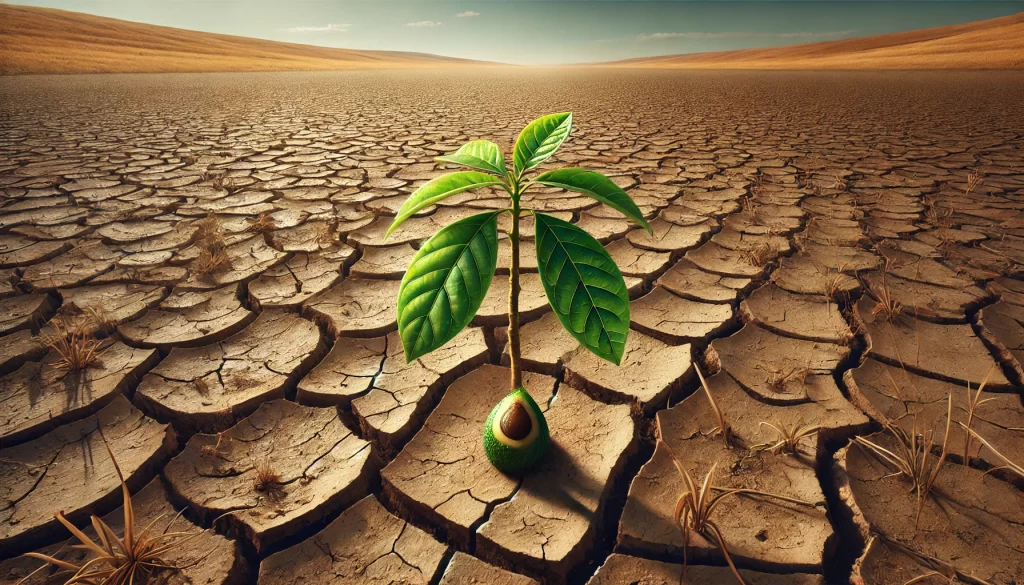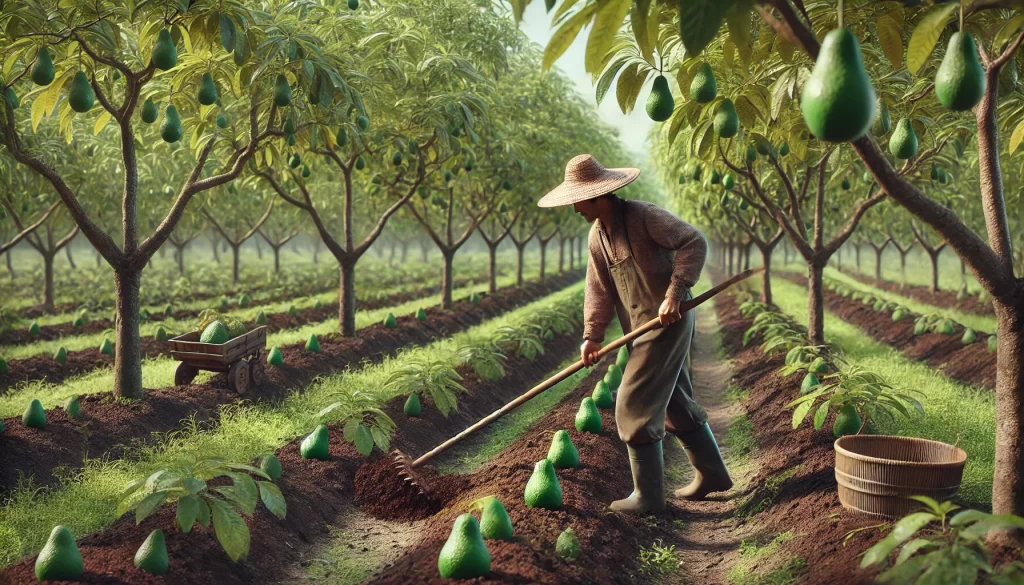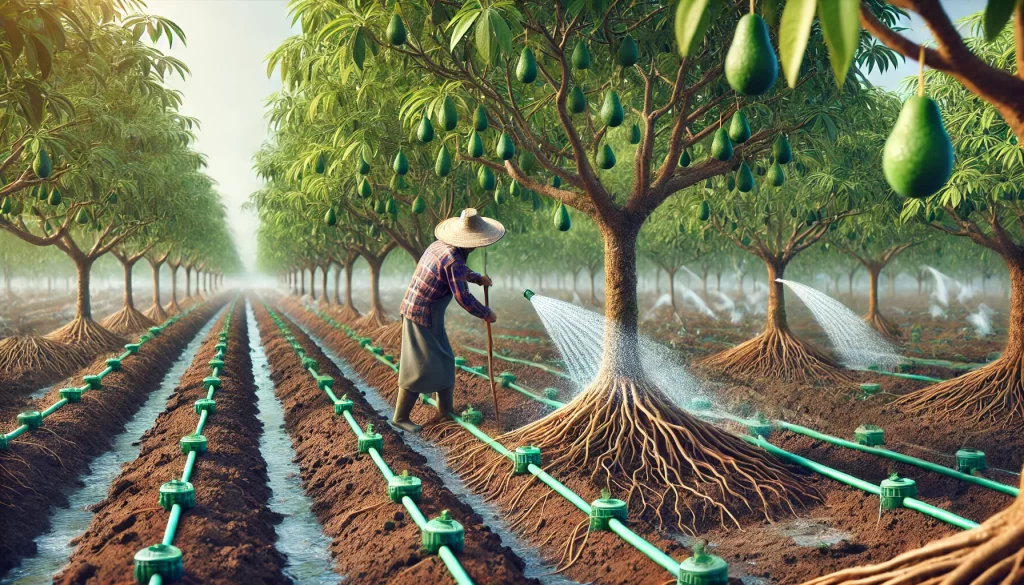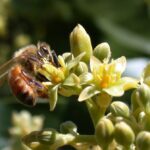The growing global demand for avocados has led to a significant expansion of cultivation areas, raising concerns about the environmental impact of this production. To ensure a sustainable future for the avocado industry, it is essential to adopt responsible agricultural practices that minimize environmental impact, conserve natural resources, promote biodiversity, and mitigate the negative effects of plantations. This article explores the best sustainable practices in avocado production and how they contribute to environmentally responsible management.

Sustainable Agricultural Practices in Avocado Production
Sustainable agricultural practices seek to balance the need for efficient and profitable production with environmental protection. These practices are essential to reduce the ecological footprint of avocado production.
Sustainable Soil Management
Proper soil management is crucial for maintaining long-term fertility and preventing degradation.
- Soil Conservation: The implementation of terraces, vegetative barriers, and soil cover with mulch or cover crops helps prevent erosion, conserve moisture, and improve soil structure.
- Crop Rotation and Diversification: Crop rotation and diversification can reduce soil pressure and break pest and disease cycles. Incorporating legumes and other rotation crops also improves soil fertility by fixing atmospheric nitrogen.

Efficient Water Use
Efficient water management is essential in avocado production, given the high water consumption of the crop.
- Drip Irrigation: Drip irrigation is a highly efficient technique that reduces water waste by delivering water directly to the tree’s root zone. This not only saves water but also reduces nutrient leaching and the risk of moisture-related diseases.
- Rainwater Harvesting and Storage: In regions with seasonal rainfall, rainwater harvesting and storage can complement water needs during dry periods, reducing reliance on groundwater or surface water sources.

Sustainable Fertilization
Rational fertilizer use is crucial to avoid soil and water contamination, as well as to maintain ecosystem health.
- Organic Fertilization: Incorporating compost, manure, and other organic amendments not only provides essential nutrients to plants but also improves soil structure and water retention capacity.
- Integrated Fertilizer Management (IFM): IFM combines the use of organic and inorganic fertilizers, optimizing the amount and timing of application to maximize efficiency and minimize environmental impact.

Integrated Pest Management (IPM)
IPM is a holistic approach to pest and disease control that minimizes the use of chemical pesticides and promotes ecosystem health.
- Biological Control: The use of natural enemies, such as predators and parasitoids, helps keep pest populations under control naturally, reducing the need for pesticides.
- Cultural Practices: Crop rotation, weed control, and removal of crop residues are cultural practices that can reduce the incidence of pests and diseases without resorting to chemicals.

Natural Resource Management and Biodiversity Conservation
Sustainable management of natural resources and biodiversity conservation are essential for maintaining ecosystem health and ensuring the long-term sustainability of avocado production.
Forest and Natural Habitat Conservation
The expansion of avocado cultivation has often resulted in deforestation and loss of natural habitats, threatening biodiversity and contributing to climate change.
- Sustainable Agriculture on Degraded Lands: Instead of converting primary forests into farmland, farmers can choose to cultivate on degraded lands that have been previously used for other purposes, restoring fertility and biodiversity through sustainable practices.
- Maintaining Ecological Corridors: Conserving ecological corridors within and around avocado plantations is crucial to allow species movement and maintain ecosystem connectivity.
Promoting Biodiversity in the Agroecosystem
Promoting biodiversity within avocado orchards not only benefits the environment but can also enhance the crop’s resilience to pests, diseases, and climate changes.
- Crop Diversification: Integrating fruit trees, cover crops, and native species within the orchard can increase biodiversity, provide habitat for pollinators and natural enemies, and improve ecosystem stability.
- Polyculture and Agroforestry: Using agroforestry systems, where avocados are grown alongside other trees and crops, can enhance biodiversity, reduce soil erosion, and increase the overall sustainability of the agricultural system.

Mitigating the Environmental Impact of Avocado Plantations
Mitigating the environmental impact of avocado production is essential to reduce the crop’s ecological footprint and ensure its long-term sustainability.
Reducing the Carbon Footprint
Avocado production can contribute significantly to greenhouse gas emissions if not properly managed.
- Carbon Farming Practices: Implementing practices that increase carbon sequestration in the soil, such as adding organic matter, reducing tillage, and maintaining soil cover, can help reduce the crop’s carbon footprint.
- Renewable Energy: Integrating renewable energy sources, such as solar or wind power, into agricultural operations can reduce reliance on fossil fuels and lower greenhouse gas emissions.
Waste Management and Circular Economy
Proper management of agricultural waste is essential to prevent pollution and promote sustainability.
- Composting Organic Waste: Composting harvest residues, prunings, and other agricultural by-products not only reduces waste but also provides a valuable resource for improving soil fertility.
- Reuse and Recycling of Materials: Encouraging the reuse and recycling of materials, such as packaging and tools, can reduce environmental impact and promote a circular economy in avocado production.

Certifications and Standards for Sustainable Avocado Production
Certifications and standards are key tools to ensure that avocado production is carried out sustainably and meets environmental and social standards.
Sustainable Certifications
Obtaining certifications such as GlobalGAP, Rainforest Alliance, or Fair Trade can demonstrate a commitment to sustainability and open markets that value responsible agricultural practices.
- GlobalGAP: This certification ensures that agricultural production complies with best practices in food safety, environmental sustainability, and worker welfare.
- Rainforest Alliance: Certifies that farms meet rigorous criteria regarding biodiversity conservation, sustainable land management, and protection of workers’ rights.
Compliance with Environmental Regulations
Compliance with local and international environmental regulations is essential to operate legally and minimize environmental impact.
- Environmental Impact Assessments (EIA): Before establishing new plantations, it is crucial to conduct an EIA to identify and mitigate potential negative environmental impacts.
- Compliance with Environmental Legislation: Ensuring compliance with environmental laws and regulations is essential to avoid penalties and promote long-term sustainability.
 AgronoBlog – Agriculture Blog
AgronoBlog – Agriculture Blog 


